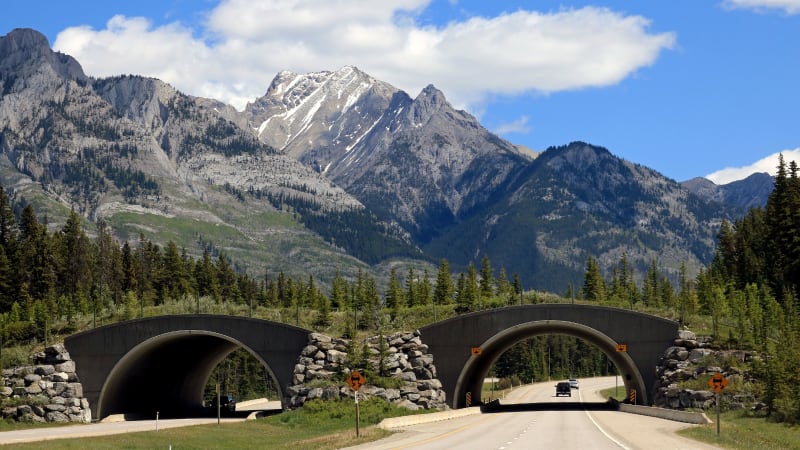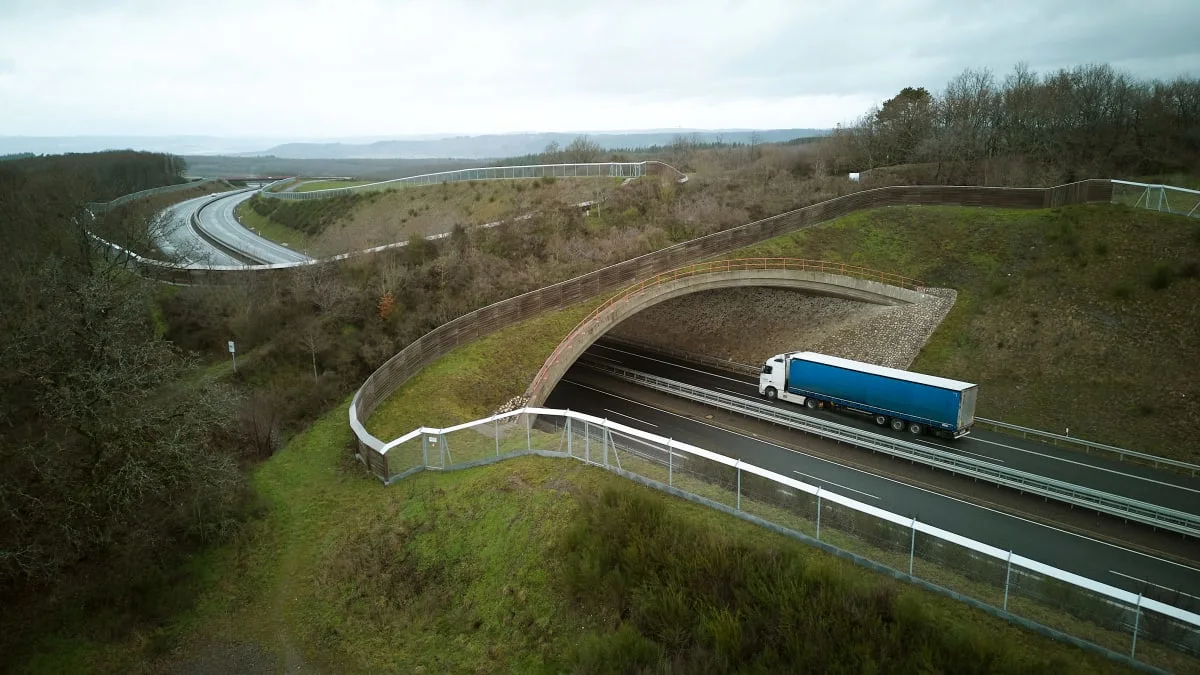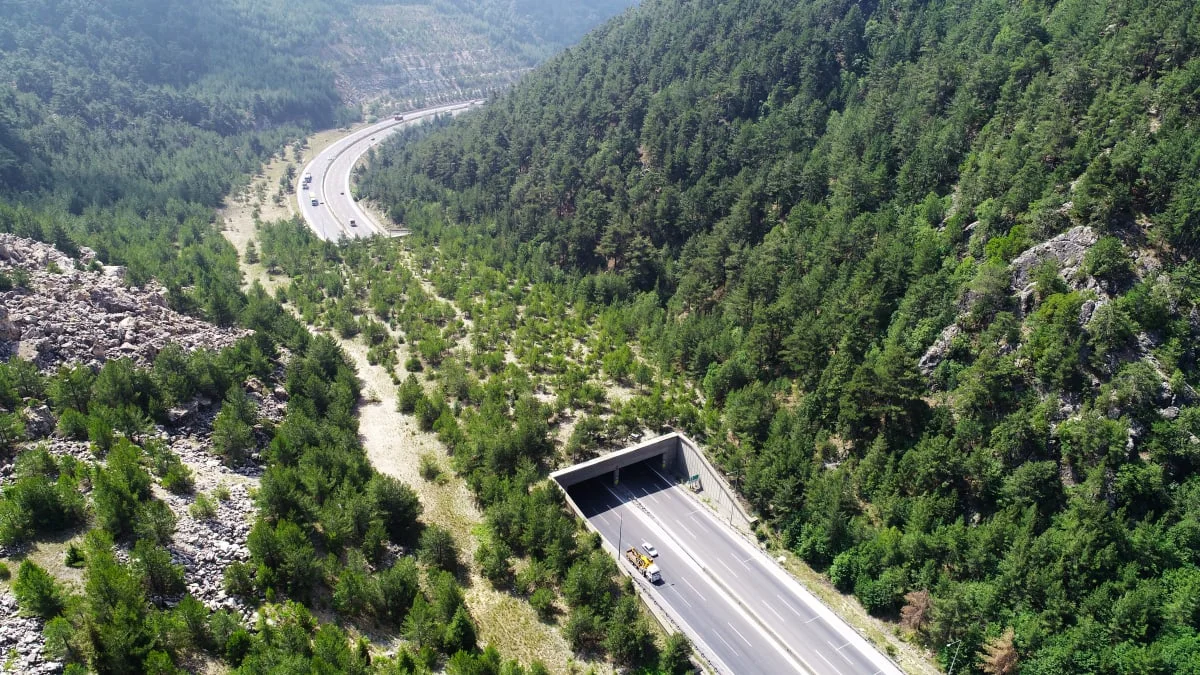Critter crossings: Trans-Canada Highway is getting the latest wildlife bridge

Canadian authorities have started building a new bridge over a part of the Trans-Canada Highway located west of Calgary. It’s not for motorists (they’re going under it) or for pedestrians (there aren’t many out there). It was designed to help wildlife cross the four-lane road.
Dialog, the Canadian design firm responsible for the project, has already created six similar bridges, according to Fast Company. These structures aren’t limited to Canada’s vast landscape: North America’s largest wildlife crossing bridge is located between mileposts 61 and 62 on Interstate 90 in Washington state. (The video above shows wildlife using it, and trap cameras even captured a moose on the crossing, a rarity that far south in the Cascades.) You’ll also spot several wildlife bridges if you drive across certain parts of Germany and France and even in Turkey (as seen in the photos below).
Building a bridge is a massive undertaking, but these projects benefit drivers and wildlife alike. A bridge located in Banff National Park has been standing for nearly 30 years, and the same report notes that about 100 elk were killed by cars annually there before it was set up. Fast-forward to 2023, and that number has dropped to nearly zero. Getting wildlife to use a bridge built for them is easier said than done, however.


Wildlife bridges in Banff National Park, top; in Rhineland-Palatinate, Germany, lower left; and near Adana, Turkey. (Getty Images)
Elk don’t read street signs, and grizzly bears don’t use Google Maps, so architects need to work jointly with biologists to design the right type of bridge. The project Dialog has designed starts with a pair of steel arches positioned over the road; it’s the basic foundation that the rest of the bridge will rest on. Workers then add a layer of soil before planting vegetation ranging from small shrubs to big trees such as pines, spruces, and aspens.
“One side of the bridge is going to be higher than the other side of the bridge. So, there’s a lowland condition and [an] upland condition. We’ve tried to mimic that in the planting design so that [it] really feels like on day one it has been there, and then as it grows over time it will continue to mature and feel like a natural, functional part of the ecosystem,” landscape architect Jill Robertson told Fast Company.
The size and location of each bridge varies from place to place, and several factors (including the natural migration patterns of animals) enter this equation. Cost is a concern as well: Beyond building the bridge itself, workers need to put up fences to direct animals to the structure, and they sometimes plant trees on either side of it to keep as much traffic-related noise and light out of the forest as possible. The cost varies, too; the bridge being built along the Trans-Canada Highway should cost less than $12 million (all of it government-funded).
Canadian authorities expect the bridge will be completed in October 2023, though they might wait until 2024 to begin planting trees. For more details on the Calgary project, check out the report in Fast Company.







